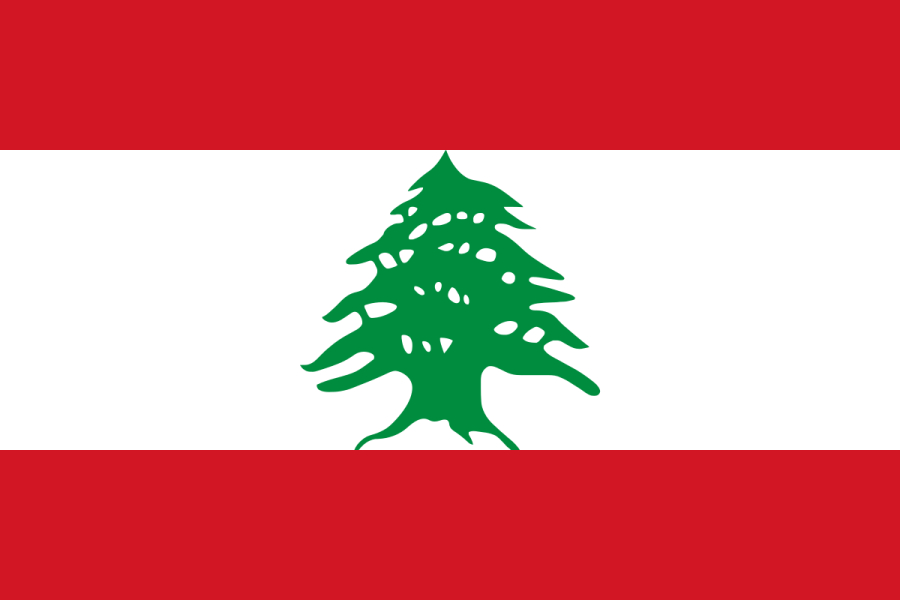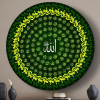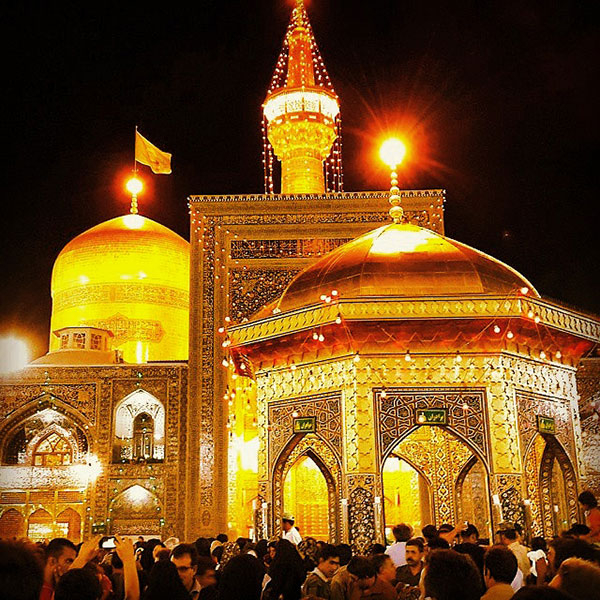Lebanon, officially the Republic of Lebanon, is a country in the Levant region of West Asia. Situated at the crossroads of the Mediterranean Basin and the Arabian Peninsula, it is bordered by Syria to the north and east, Israel to the south, and the Mediterranean Sea to the west; Cyprus lies a short distance from the coastline. Lebanon has a population of more than five million and an area of 10,452 square kilometres (4,036 sq mi). Beirut is the country's capital and largest city.
The culture of Lebanon reflects the legacy of various civilizations spanning thousands of years. Originally home to the Canaanite-Phoenicians, and then subsequently conquered and occupied by the Assyrians, the Persians, the Greeks, the Romans, the Arabs, the Crusaders, the Ottoman Turks and most recently the French, Lebanese culture has over the millennia evolved by borrowing from all of these groups. Lebanon's diverse population, composed of different ethnic and religious groups, has further contributed to the country's festivals, musical styles and literature as well as cuisine. Despite the ethnic, linguistic, religious and denominational diversity of the Lebanese, they "share an almost common culture". Lebanese Arabic is universally spoken while food, music, and literature are deep-rooted "in wider Mediterranean and Levantine norms".
Lebanon is a parliamentary democracy that includes confessionalism. The National Pact, erected in 1943, laid out a governing arrangement intended to harmonize the interests of the country's major religious groups.[206] The President has to be a Maronite Christian, the Prime Minister a Sunni Muslim, the Speaker of the Parliament a Shi'a Muslim, the Deputy Prime Minister and the Deputy Speaker of Parliament Eastern Orthodox. This system is intended to deter sectarian conflict and to represent fairly the demographic distribution of the 18 recognized religious groups in government.
Until 1975, Freedom House considered Lebanon to be among only two (together with Israel) politically free countries in the Middle East and North Africa region. The country lost this status with the outbreak of the Civil War, and has not regained it since. Lebanon was rated "Partly Free" in 2013. Even so, Freedom House still ranks Lebanon as among the most democratic nations in the Arab world.
According to the V-Dem Democracy indices Lebanon is 2023 the second most electoral democratic country in the Middle East.
Until 2005, Palestinians were forbidden to work in over 70 jobs because they did not have Lebanese citizenship. After liberalization laws were passed in 2007, the number of banned jobs dropped to around 20. In 2010, Palestinians were granted the same rights to work as other foreigners in the country. Lebanon's national legislature is the unicameral Parliament of Lebanon. Its 128 seats are divided equally between Christians and Muslims, proportionately between the 18 different denominations and proportionately between its 26 regions. Prior to 1990, the ratio stood at 6:5 in favor of Christians, but the Taif Agreement, which put an end to the 1975–1990 civil war, adjusted the ratio to grant equal representation to followers of the two religions.
The Parliament is elected for a four-year term by popular vote on the basis of sectarian proportional representation.The executive branch consists of the President, the head of state, and the Prime Minister, the head of government. The parliament elects the president for a non-renewable six-year term by a two-thirds majority. The president appoints the Prime Minister, following consultations with the parliament. The president and the prime minister form a cabinet, which must also adhere to the sectarian distribution set out by confessionalism.
In an unprecedented move, the Lebanese parliament has extended its own term twice amid protests, the last being on 5 November 2014,an act which comes in direct contradiction with democracy and article of the Lebanese constitution as no elections have taken place. Lebanon was without a President between May 2014 and October 2016. Nationwide elections were finally scheduled for May 2018. As of August 2019, the Lebanese cabinet included two ministers directly affiliated with Hezbollah, in addition to a close but officially non-member minister. The most recent parliamentary elections were held on 15 May 2022.
Religion in Lebanon
Lebanon is an eastern Mediterranean country that has the most religiously diverse society within the Middle East, recognizing 18 religious sects. The recognized religions are Islam (Sunni, Shia, Alawites, and Isma'ili), Druze, Christianity (the Maronite Church, the Greek Orthodox Church, the Melkite Greek Catholic Church, evangelical Protestantism, the Armenian Apostolic Church, the Armenian Catholic Church, the Latin Church, the Syriac Catholic Church, the Syriac Orthodox Church, the Assyrian Church of the East, the Chaldean Catholic Church, the Coptic Orthodox Church) and Judaism.
Lebanon differs from other Middle East countries where Muslims have become the majority after the civil war, and somewhat resembles Bosnia-Herzegovina and Albania, both are in Southeast Europe, and have a diverse mix of Muslims and Christians that each make up a large proportion of the country's population. Christians were once a majority inside Lebanon and are still an overwhelming majority in the diaspora, which consists of nearly 14 million people.
Besides Lebanese citizens in Lebanon, a large proportion of people in the country are refugees, accounting for approximately 2 million people out of a bit over 6 million in 2017, which affects statistics. The refugees, who mostly are of Syrian or Palestinian origin, are predominantly Sunni Muslim, but include Christians and Shia Muslims.
Under the National Pact, the president of Lebanon must be a Maronite Christian, the prime minister a Sunni Muslim,and the speaker of parliament a Shia Muslim.
No official census has been taken since 1932, reflecting the political sensitivity in Lebanon over confessional (i.e., religious) balance. As a result, the religious affiliation of the Lebanese population is very difficult to establish with certainty and various sources are used to get the possible estimate of the population by religious affiliation. The following are different sources that do not pretend to be fully representative of the religious affiliation of the people of Lebanon.
A 2012 study conducted by Statistics Lebanon, a Beirut-based research firm, estimated Lebanon's population to be 54% Muslim (27% Shia; 27% Sunni), 46% Christian (31.5% Maronite, 8% Greek Orthodox, 6.5% other Christian groups)
The CIA World Factbook estimates (2020) the following, though this data does not include Lebanon's sizable Syrian and Palestinian refugee populations: Muslim 67.8% (Sunni, Shia and smaller percentages of Alawites and Ismailis), Christian 32.4% (mainly Maronite Catholics are the largest Christian group), Druze 4.5%, and very small numbers of Jews, Baha'is, Buddhists, and Hindus.
According to a 2022 analysis by the Pew Research Center, the demographic landscape of Lebanon reveals a Christian population estimated at 43.4%, with Muslims constituting the majority at 57.6%. This data underscores the religious diversity within Lebanon, reflecting a dynamic interplay of different faith communities within the country.
Lebanon has a community of around 13,000 Hindus. There is a very small and ancient community of Zoroastrians, numbering between 100–500 individuals. Lebanon also has a Jewish population estimated at less than 100.
Shias:
2011: Shias made up 27.35% of the voter base, with 912,095 registered voters. 2018: This number rose to 28.2%, totaling 1,039,341 voters. 2024: However, the percentage decreased to 26.2%, with 1,039,487 voters. Shia Muslims experienced an increase between 2011 and 2018, but this trend reversed by 2024. The Lebanese-Israeli conflicts, which have disproportionately affected southern Lebanon (where many Shias reside), likely led to this decrease. Many Shia residents of southern Lebanon have faced displacement, economic hardship, and lower birth rates due to instability and conflict. Additionally, some may have migrated to Syria or other countries in search of better living conditions, further contributing to their reduced voter base.
Sunnis:
2011: Sunnis constituted 27.65% of voters, with 922,125 individuals. 2018: This percentage fell to 25.49%, with 939,461 registered voters. 2024: Their proportion stabilized slightly, reaching 26.55%, with 1,053,373 voters. Like the Shia, the Sunni population has experienced fluctuations. While their absolute numbers have grown, their overall percentage of the population has seen a slight decline. Many Sunni communities reside in regions of Lebanon that have been economically challenged, such as Tripoli and parts of the Bekaa Valley. These areas have been affected by both internal Lebanese political struggles and the Syrian crisis, which may have led to migration or reduced birth rates.
Alawites:
2011: Alawites made up 0.88% of voters, with 29,314 individuals. 2018: Their number slightly increased to 0.89%, with 32,802 voters. 2024: The Alawite percentage decreased to 0.64%, with 25,392 voters, marking a decline of -15.44%. The Alawite community, which is closely tied to the Assad regime in Syria, has seen a significant decline in Lebanon. The Lebanese-Israeli conflicts and their connection to the Assad regime likely contributed to their displacement or migration back to Syria, as many Alawites fled Lebanon due to political instability and threats to their safety.
Druze The Druze community, a significant but small religious group in Lebanon, has seen a relatively stable voter base:
2011: The Druze represented 5.74% of voters, with 191,321 individuals. 2018: This percentage decreased to 5.42%, with 199,760 voters. 2024: The Druze voter base grew to 206,707 individuals, constituting 5.21% of voters. The Druze have maintained a relatively stable population in Lebanon, with minor fluctuations in their overall percentage. Their traditional strongholds in the Chouf mountains have largely remained insulated from the worst effects of conflict, allowing their population to grow modestly over time.


















